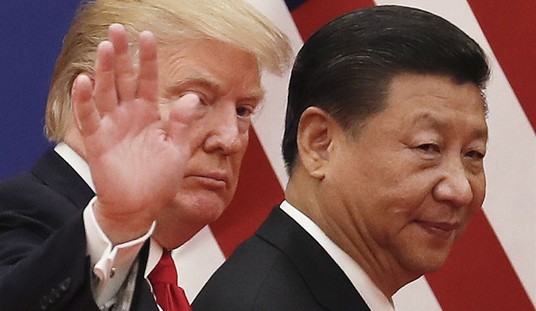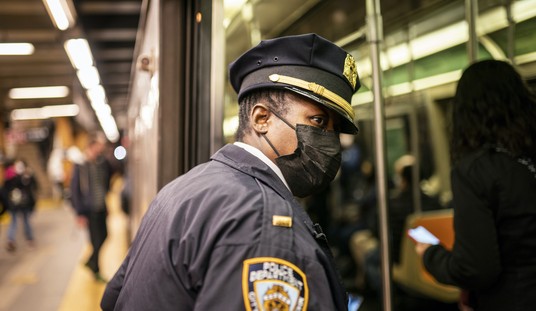Although Americans are worried by the novel coronavirus, dubbed COVID-19, they aren’t as worried by it as we in Europe. The reason, of course, is that America is such a big country and relatively very few people have it. It seems to be something that will happen to others, not to oneself. In Europe, however, it is getting very, very close to everybody. Italy is a slaughterhouse with hundreds of people dying every day. France and Spain are on course to have the same happen to them in only a week’s time, and other European countries know they too will suffer the same fate.
Yesterday, Dutch Prime Minister Mark Rutte took the time to address the nation in a televised address — which is something that seldom happens. Sitting behind his desk, Rutte explained that there are three possible approaches to fighting a pandemic:
1. Letting the virus do what it wants to do. The Dutch government decided against this strategy because it would cause the health care system to be overwhelmed in a matter of days, at most two weeks, resulting — like in Italy — in hundreds of deaths per day. In a nation of 17 million, that’s shocking.
2. Lock down the entire country. Although this is the strategy used by China, Italy (now… they were too late), France, Spain, and others, Rutte decided against it because it would do tremendous economic damage and because, he said, it wouldn’t actually make the problem go away. When the lockdown ends — say, a year from now — the virus will still be out there in the world, and it will be back in no time.
3. Herd immunity. This is the strategy the Dutch government has decided to take. It means that 40 — 80 percent of the people will get this decease. The government will attempt to guide it in such a manner that “the curve of infections is flattened,” meaning that there are never too many infections in one week for our hospitals to handle. The idea is that young, strong and healthy people have to get the virus because they are least at risk of dying from it. Once they recover from it, they’ll be immune to it. If enough people are immune to it, herd immunity theory holds, and society as a whole will be immune.
Sounds reasonable, of course. Sadly, however, there are a couple of arguments against herd immunity that the Dutch PM forgot to mention (funny how that happens, isn’t it?):
1. Leading virologist Roberto Burioni says that he is “shocked” by Rutte’s statement that “herd immunity” is based on strong scientific evidence. “There is no scientific basis to speak about herd immunity,” Burioni told Dutch newspaper De Telegraaf. “The Dutch government is taking an incredibly big risk. We don’t even know whether people can become immune to this virus… Besides, there’s no vaccine available yet.”
2. Taking the herd immunity strategy means that, as said, 40% to 80% of Dutch people have to get the virus. If you take a low death rate of 0,6%, this means that tens of thousands (possibly more) people will die. Here is the math: 40% of 17,000,000 is 6,800,000 and 0.6% of that is 40,800.
Yes, that’s right. By opting for “herd immunity” the Dutch government is signing the death warrants of at least 40,800 individuals.
And that’s in a positive scenario. 0.6% is the death rate in South Korea and Singapore. If you look at other countries, the death rate appears to be around 2% at least (that’s without Wuhan and Italy). Two percent of 6,800.000 is 204,000 people.
Let that sink in: out of a population of 17 million, 204,000 may die from this horrible virus in the coming 12 months. Note: the flu kills on average 2,000 people a year. Yeah, that’s for all those who say that COVID-19 is “just a flu, man!”
3. At this moment, more than half of those in intensive care are aged 50 or below. Yes, it’s true that elderly people are more likely to die from this coronavirus from hell. That’s only because it’s somewhat easier for doctors to pull younger and stronger people back from the brink of death. It’s not because these younger people’s lives aren’t in danger.
Now realize that in the entire country, there are only 1,100 intensive care beds available. They’ll undoubtedly increase that amount, but even if you double it to 2,200 there won’t be nearly enough beds to help all those who need to be treated.
In order to fully grasp what we’re dealing with her, read this Twitter-thread by Dutchman Gerard J.P. van Westen:
Am I crazy? I listened to #Rutte and understand the pont for herd immunity. It allows a laisez faire approach after the pain is over.. however, for a visur with an R0 of 2.35 you need 43% of the population to be immune and been through the disease. (1/x)
— Gerard JP van Westen (@GJPvWesten) March 16, 2020
Highlights:
1. For a visur with an RO of 2.35 you need 43% of the population to go through the disease/be immune.
2. This means that we’re talking about 7,493,610 individuals.
3. Since the Dutch health institute believes only 1 in 6 people with the virus are tested, 1,248,935 people have to test positive.
4. If we assume a hospitalization rate of 12% (which is low) we end up with 149,872 people who need hospitalization.
5. Note: we have 332 beds per 100,000 people. In other words: 56,440. Coronavirus patients alone will need triple that amount.
6. 5% will need critical care, meaning 62,447 people.
7. There are now… 1,100 ICU beds available.
8. If we assume a time to recovery of 3 weeks (which is indeed the case), all hospital beds in the Netherlands will be occupied for 8 weeks, and all ICU beds are occupied for 170 weeks.
170 weeks? But we’re supposed to do this in one year’s time. That’s 52 weeks. Can you imagine what will happen? The ICU will send people — often the elderly — away to die at home instead of receiving the care they need to save their lives.
Follow me on Twitter: @GalienMichael.









Join the conversation as a VIP Member